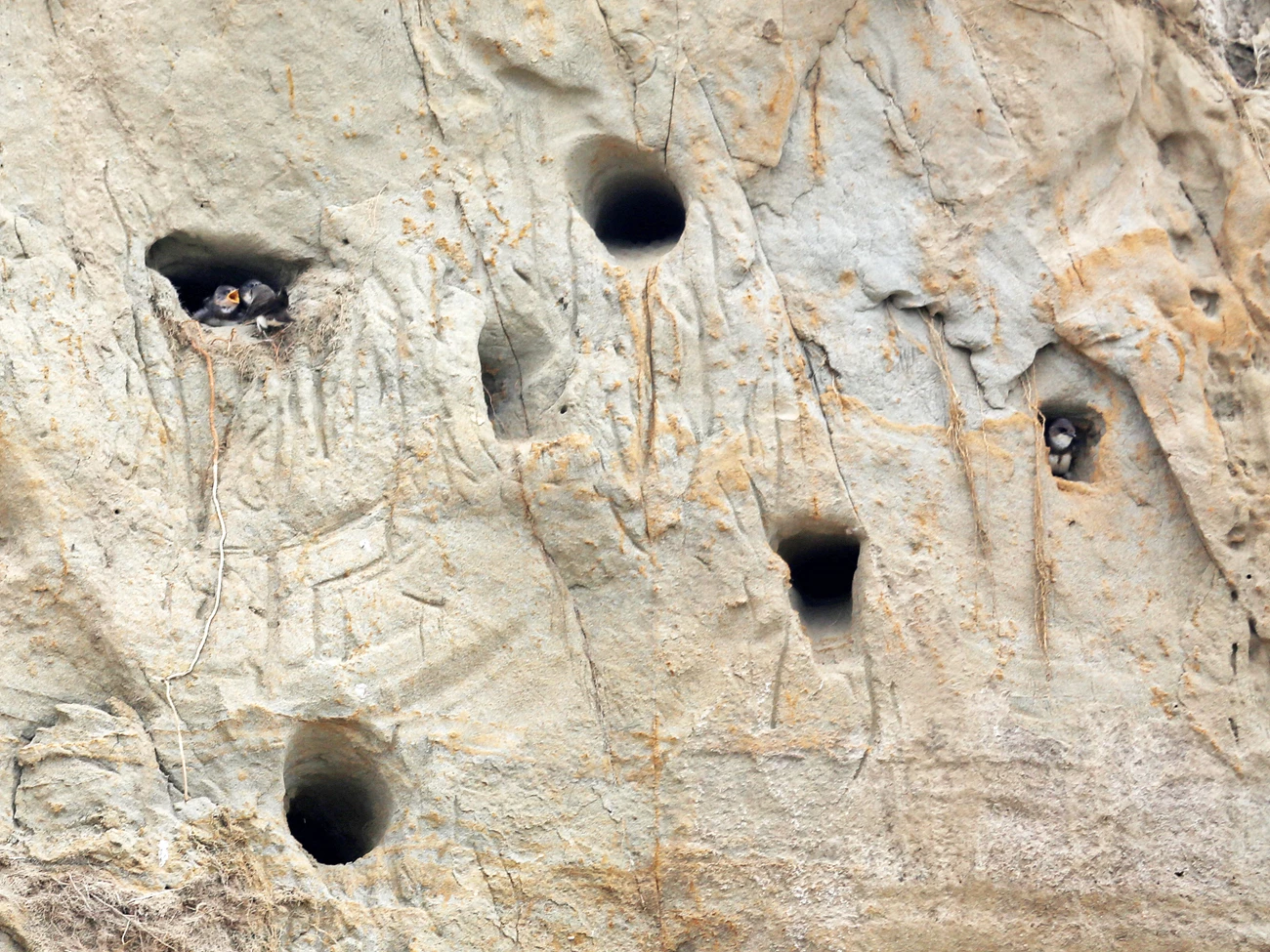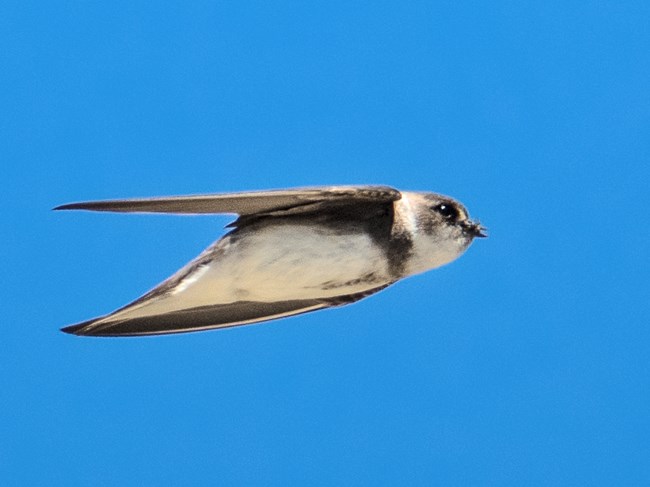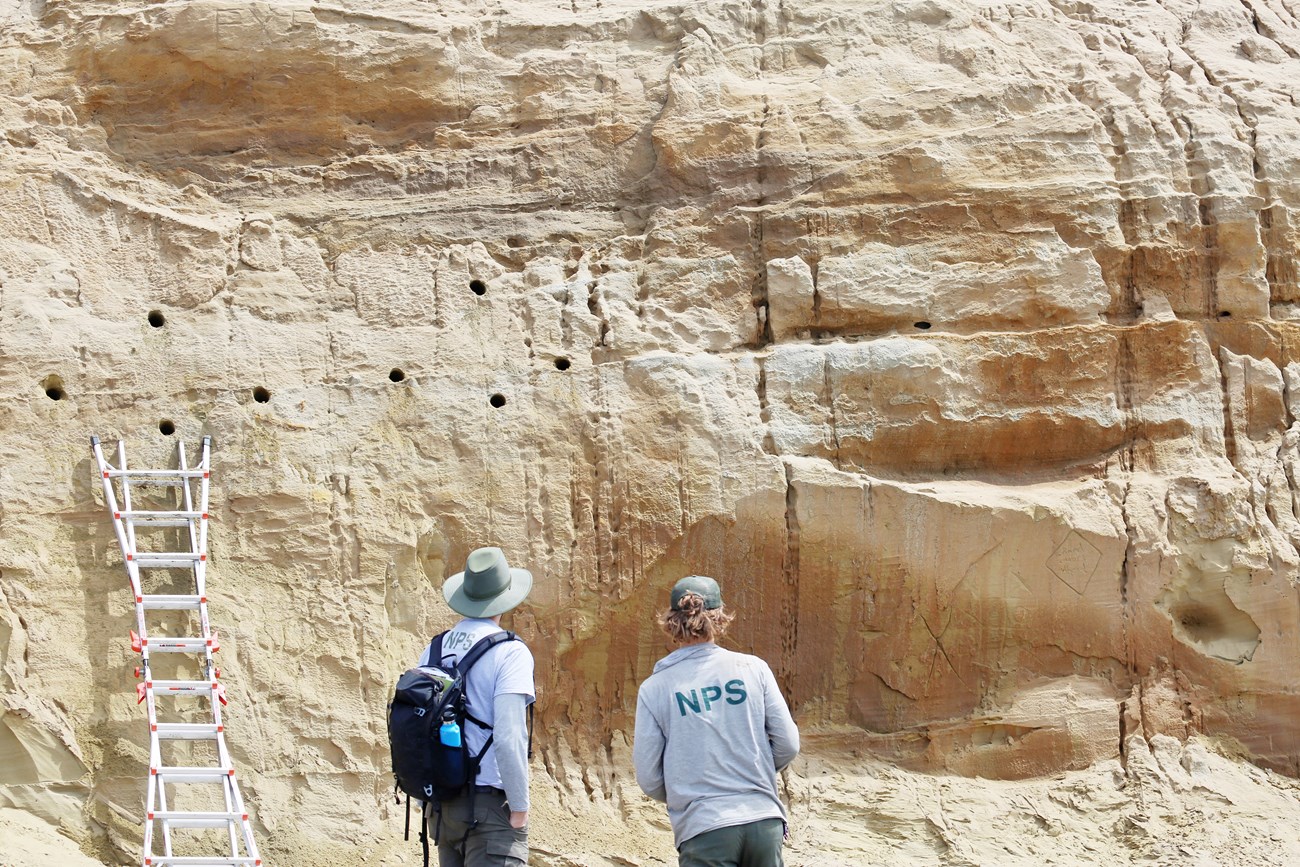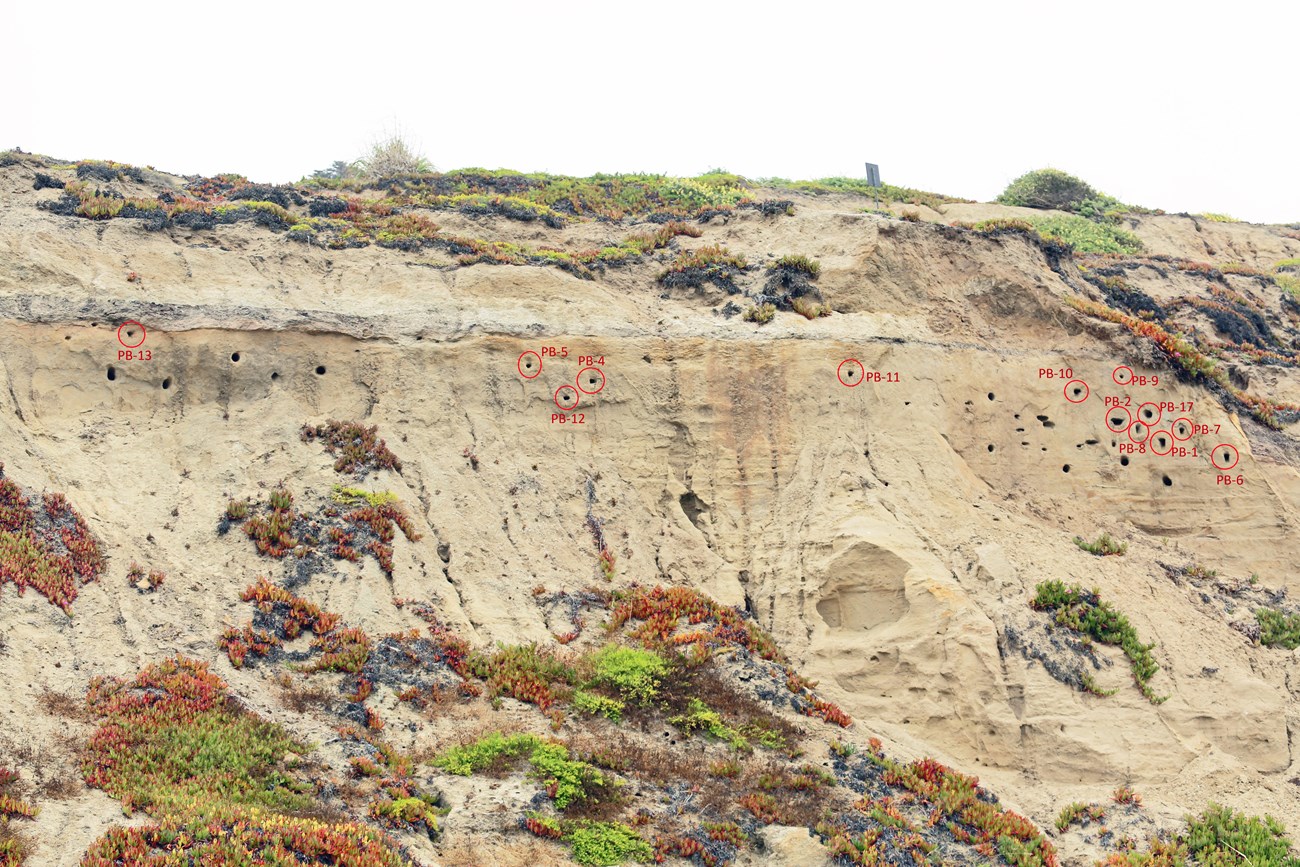Last updated: August 9, 2023
Article
With Monitoring and Research, Biologists Work to Help Fort Funston’s Nesting Bank Swallows
By Wildlife Intern Aiko Goldston, Golden Gate National Recreation Area

NPS / Aiko Goldston

Morgan Barnes
July 2023 - Fort Funston is a stretch of sandy beach backed by towering sandstone cliffs within the Golden Gate National Recreation Area. While walking along the beach, visitors may spot clusters of small burrows dotting the cliffside. These are the nesting colonies of the bank swallow (Riparia riparia). Bank swallows are long-distance migrants that journey back and forth between South America, where they overwinter, and their Northern American nesting grounds. Using their bill, feet, and wings, bank swallows excavate their burrows in vertical faces of banks and bluffs, generally near open water. They have nested in the bluffs at Fort Funston since the early 1900s.
The bank swallow was listed as a threatened species under the California Endangered Species Act in 1989, after the species became extirpated from southern California and much of central California. Habitat loss at their nesting colony sites continues to impact the species. It is estimated that their California range has been reduced by as much as 50%. Bank swallow colonies at Fort Funston and Año Nuevo State Park are thought to be the only two coastal bank swallow nesting colonies remaining in California.
The National Park Service began systematically monitoring breeding bank swallows each spring beginning in 2000. The monitoring program was designed to determine trends in bank swallow population by tracking the total number of burrows, burrow locations, and disturbances. The monitoring team has noticed the bank swallow colony shifting nesting locations throughout the years. Since 2020, the birds have nested at Phillip Burton Memorial Beach at the southern end of Fort Funston.

NPS / Aiko Goldston
To see if bank swallows could be attracted to nest, park biologists piloted drilling burrows prior to the start of the 2023 season. They drilled 50 burrows with a depth of about half a meter into six sections of suitable cliffside at Fort Funston. They also removed overhanging ice plant to make the bluff face more accessible for nesting.
Park biologists also expanded their monitoring efforts to learn more about the bank swallows’ burrow use and nest success. In addition to transect surveys, where total bank swallow burrows are counted in monitoring sectors every 7-10 days, they added nest observation surveys starting in 2022. These involve surveyors observing the main colony site(s) for an hour and recording all bank swallow activity.

NPS / Aiko Goldston
Since 2000, the total number of bank swallow burrows has been declining at Fort Funston, and this season was no different. Surveyors recorded 18 active burrows, with 16 nestlings seen in eight burrows. They found only one of the 50 drilled burrows being used. Through continued research and monitoring, park biologists hope to find ways to enhance the bank swallow population at Fort Funston.
For more information
- Contact Golden Gate Wildlife Biologist Rachel Townsend or Wildlife Ecologist Bill Merkle
See more from the Bay Area Nature & Science Blog
